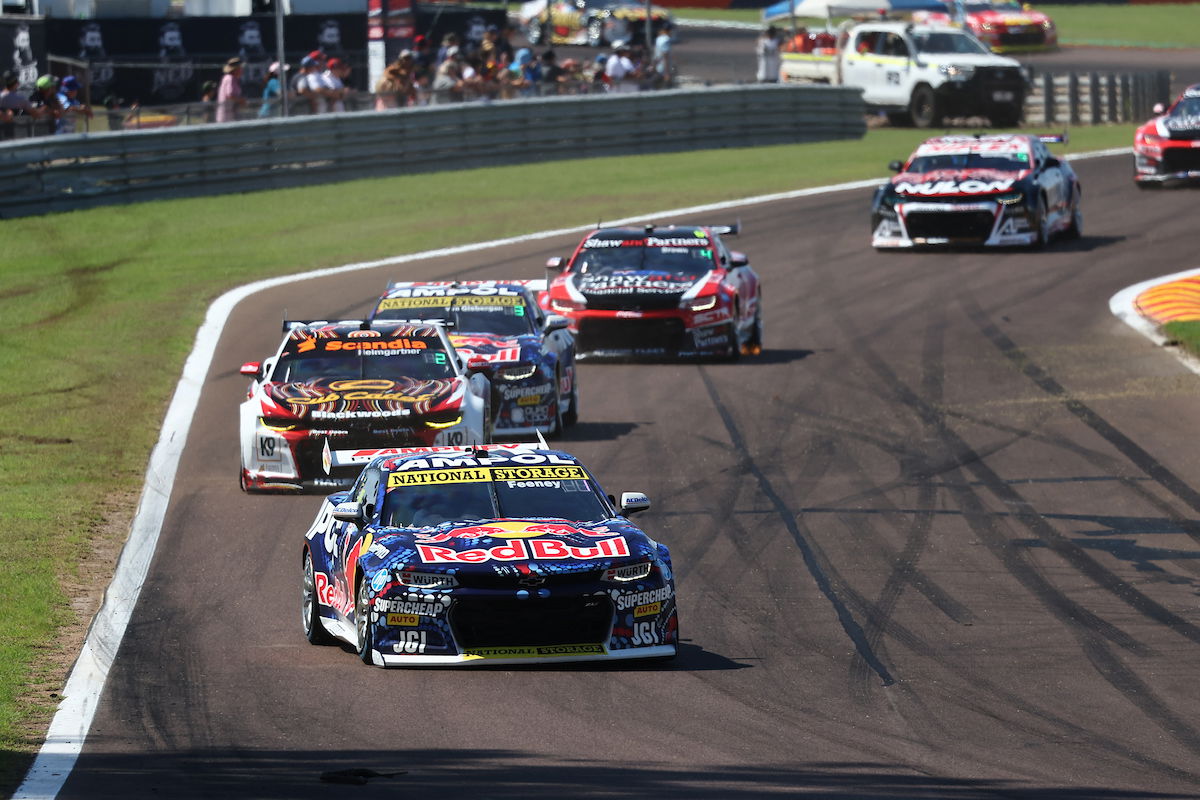

Supercars has confirmed that a parity review has been triggered as a result of what transpired at the Betr Darwin Triple Crown.
As previously reported, Tickford Racing CEO Tim Edwards claimed on Sunday night via an official Ford Australia press release that the parity trigger has been hit “constantly”, as the Camaro dominates the Mustang in the initial events of the Gen3 era.
Said press release also stated, “All of the Mustang team bosses are now calling on Supercars to make a parity adjustment to allow the Gen3 Mustang to compete on an even playing field.”
They may very well get their wish given the parity review process will now be enacted.
A statement from the championship this afternoon advises, “Supercars confirms that a parity review has been triggered in accordance with the Supercars Championship regulations.
“The parity review system is designed to identify and evaluate any imbalances among the competing models. It works using the analysis of lap times across a number of races to determine whether a disparity exists.
“The threshold to trigger a review must be achieved consistently over either five consecutive races or five of eight Championship races.
“These conditions were met following the final race in Darwin.”
Supercars CEO Shane Howard explained, via that statement, “The parity review system has been a foundation of the parity assessment throughout the championship over many years.
“Now that a review has been triggered, we have commenced the nominated process.
“Supercars have met and are working with both Homologating Teams to formulate appropriate recommendations for a parity adjustment.”
Details of the parity trigger remain scarce, but Speedcafe understands that it pre-dates the Project Blueprint era which began in 2003 and is, according to one team owner, a contractual obligation to competitors.
It is a multi-faceted formula which is believed to be based on a modified 60-second lap time, and a threshold of one tenth of a second per 60.
The lap times of the top six cars from each make are compared and if they are too far apart, then the parity review is triggered.
Notably, the trigger does not guarantee a parity adjustment, consistent with Howard’s comments.
What adjustment(s) would be made, if indeed any are, remains to be seen.
The Ford camp had previously thrust engine performance into the spotlight, with suggestions of a transient disparity between its Coyote-based, 5.4-litre quad cam unit and the 5.7-litre pushrod which powers the Camaro.
Engine Specification Documents are still not locked down and the Mustangs have competed with a different calibration at each of the last four events, although there have been claims that the tinkering in that area is motivated more by driveability than out-and-out performance.
Now, however, aerodynamics is back in focus, with Speedcafe hearing that yaw has become a concern.
There is not a yaw measurement as part of Supercars’ VCAT process, which is a series of straight line tests, although it is not known what application CFD (computational fluid dynamics) has with respect to yaw.
There is also debate as to how much of an impact yaw could even have, given the relatively low level of downforce which a Gen3 Supercar achieves and myriad set-up changes which would, it is claimed, have a bigger effect on performance than a slim yaw discrepancy.




















Discussion about this post